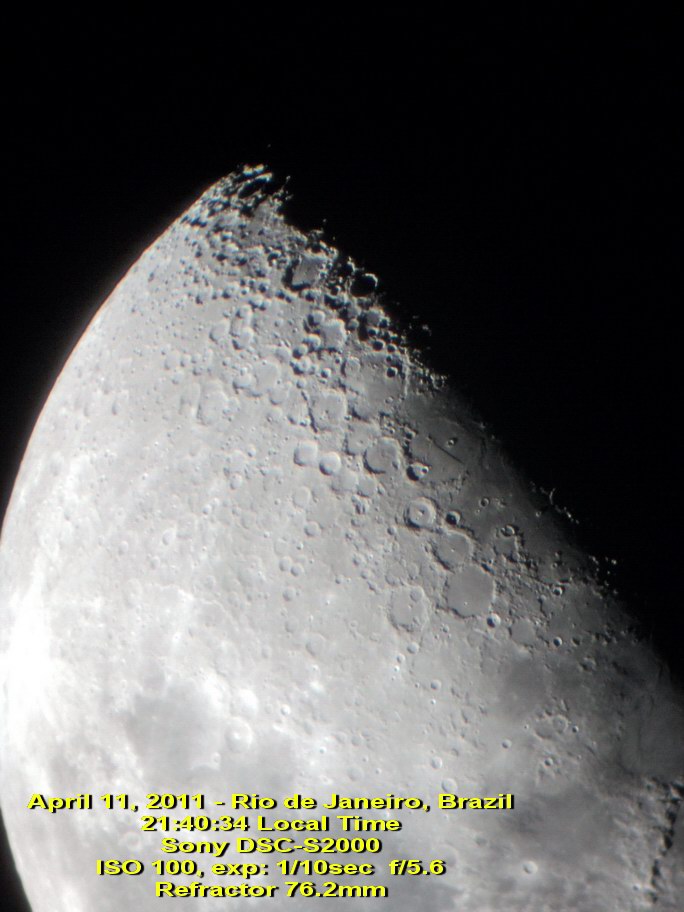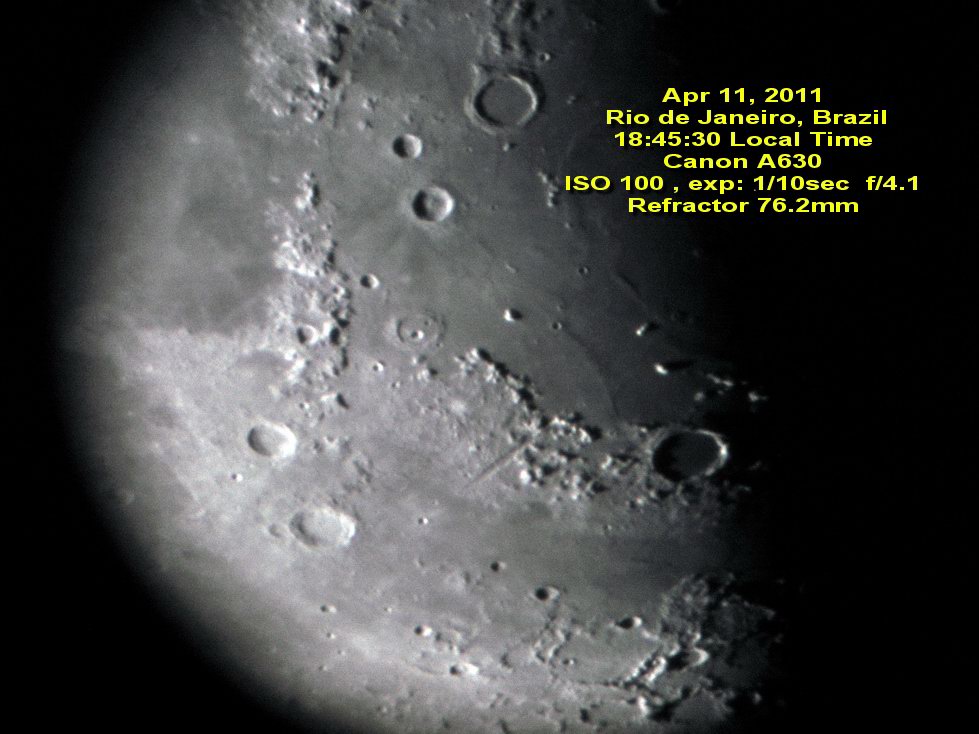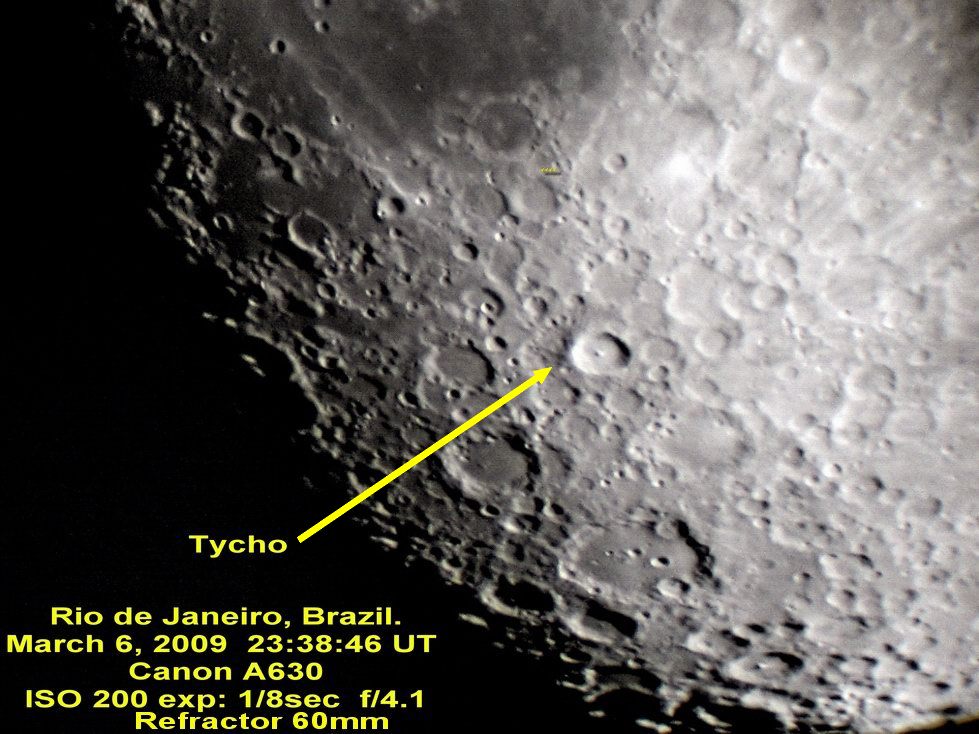 click here for Spanish version
click here for Spanish versionThis is my Astronomy page, here you'll see some of the pictures I've taken from the very start when I was a kid...

This one on the left was my first picture!!! I was 12, October
1973 and didn't know very much about astrophotography then, but I was anxious to
test my new telescope: a 60 mm (2.4 in) f/d=13.3 refractor, so I mounted my
reflex camera on a tripod aligned with the telescope's eyepiece and took some
pictures at different exposures (1/8, 1/4, 1/2, 1, 2 seconds) to determine the
best parameters. This one was with a Kodak slide film, ISO 64 at 1 second, and
although it's not very good, I jumped of joy when I saw it the first
time...
Then, 3 months and some films later, I improved my techniques and
moved to a faster film: an Ilford ISO 650, black and white film; I even
developed myself...



Although I didn't have an equatorial mounting in my telescope
in order to compensate the earth's movement, with a faster film and shorter
expositions, I obtained very interesting pictures...
But certainly my
developing skills never went that far...(Lol), so the negatives were plagued
with scratches, fingers and marks..., anyway, when I compared these new pictures
with the ones in my astronomy books, I decided that they weren't so bad after
all...
Few years later I bought a 100 mm (4 in) f/d=9 reflector, which really improved my astronomy observations a lot!!! More light gathering, better color discrimination and more power let me made my first observations of globular clusters and double stars... also, I started using better eyepieces, "borrowed" from my father's microscope. Here an advice: always look for the best quality eyepieces you can afford, as important as aperture may be, eyepieces came close in priority; therefore even a poor quality primary objective may be improved with quality eyepieces. Run away from Ramsden and Huyghens...!!!


The following pictures on the left were taken with a film that
no longer exists: GAF color slide film - ISO 500.
(I don't know what happened
with this film manufacturer, they are no longer available) but it really gave
beautiful pictures with wonderful colors!
And remember these
pictures were taken with no equatorial mounting whatsoever!!!


Here you'll find some color pictures of the moon in full color: the Copernicus crater region, Mare Imbrium (Sea of Rains), a full moon features map and finally a picture of Saturn. About the Saturn picture it would be interesting to remark that no equatorial mount was used, just rapid exposure and a lot of skill!







Now some views of the total moon eclipse of April 4th, 1996. They were taken from my home in Rio de Janeiro using an Olympus OM1 reflex camera and my 60 mm refractor. The camera was without its lens and the refractor without the eyepiece. The image was projected directly on the film.